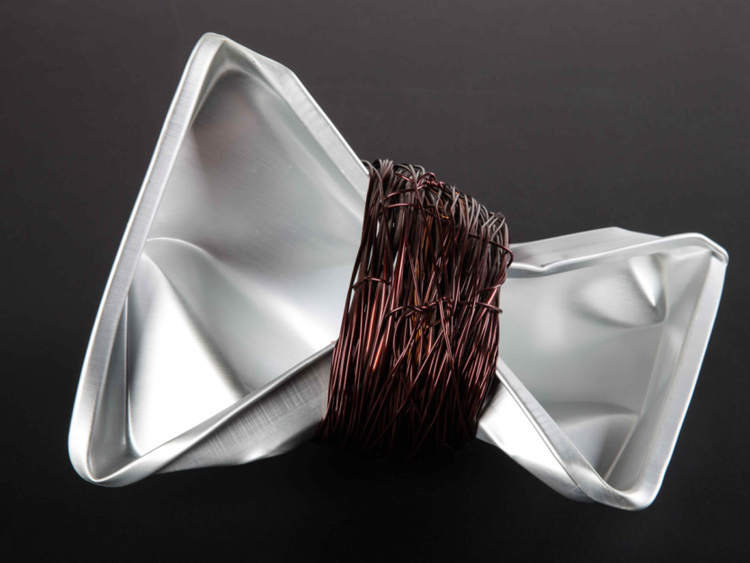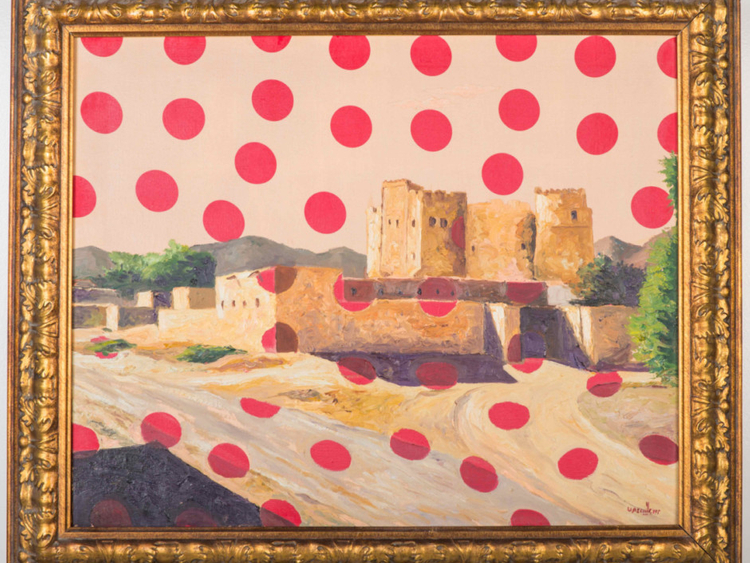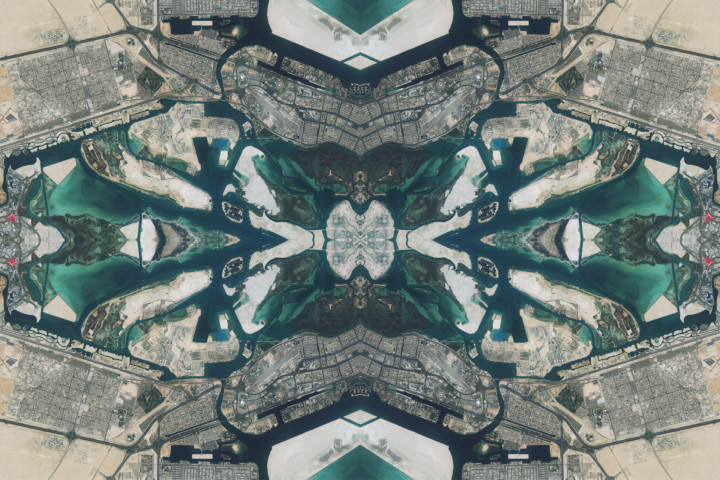
Artists are constantly making connections through their work. When it comes to the land where they were born, grew up, make their living or from where they draw inspiration, these links can be intense at the physical, emotional or philosophical level.
The exhibition, Place and Unity, which opened on October 31 at the Maraya Art Centre, showcases the works of 14 Emirati and UAE-based artists.
The artists address themes of home, identity, communication and nomadism by referring to countries and cities: from the UAE to Palestine, from Geneva to Shanghai. They examine what unites people of various nationalities with a specific focus on the UAE today.
Curated by Dr Alexandra MacGilp, the works have been selected from the collection of Abu Dhabi Music and Arts Foundation (ADMAF).
“The themes of Place and Unity suggested themselves to me as I was seeking a path through the 80 works comprising the ADMAF Art Collection. Identity and landscapes are themes that artists working in the UAE return to time and again,” MacGilp told Weekend Review.
The artists selected are from across the generations.
Late Hassan Sharif’s sculpture Shanghai is a good example of his artistic credo and approach. A found object -- shining bright aluminium tray made in China -- is twisted and copper wire wound around the middle, in an act of violence as it were. An eloquent commentary on the everyday commerce that goes with globalisation, and recirculation of goods in which a commerce-oriented city connects with ease of movement to faraway Shanghai.
One of the youngest artists, Amna Al Dabbagh displays a wall-mounted acrylic mirror work featuring the word “United” written in 52 languages most commonly used in the UAE, with the font size of each typeface as per the demographic strength of the people using that language. An emerging installation artist-cum-graphic designer, Al Dabbagh says her work involves research and is process-driven. More than the commercial aspects, she focuses on her creativity. “I give each work the time it needs,” she says. “Ultimately, the research becomes a part of the artwork.”
As to her present work, United, “the viewer will connect to the theme and realise they are inside the frame,” says Al Dabbagh.
Sarah Al Agroobi also depicts the UAE in the sculpture Desert Rose using resin and sand from the seven emirates with its remarkable colour variations.
In Zeinab Al Hashemi’s Coast Collision from her Urban Phantasmagoria series using digital scanography, satellite shot and digital editing, we are faced with a kaleidoscopic image unlike any other. The aerial view of Abu Dhabi creates a sense of movement and as MacGilp notes, Al Hashemi “generates a destabilising, vertiginous feeling that we could fall into the work”.
MacGilp is highly excited when speaking about the new commission, exhibited for the first time at the Maraya Art Centre, from Rand Abdul Jabbar, the talented artist and designer born in Baghdad, who now works in Abu Dhabi. Her installation, Foresta Sommersa, placed at the centre of the show in Sharjah, came out of her stay in Venice as part of the ADMAF Artist Mentorship Programme where she was mentored by veteran Italian artist Fabrizio Plessi.
Abdul Jabbar’s work lies at the intersection of architecture, design and research and her installation captures the fluidity of the city of Venice using primarily glass, light and sound.
“Foresta Sommersa is inspired by the unique architectural features of Venice, the pali [the wooden poles driven into the marshy land] which form its foundations on the lagoon, and conjures up the play of light and water of the serene city,” says MacGilp.
“Dreaming in Venice means also to realise a dream for tomorrow and transform a submerged forest into a magical reality,” says Plessi in a note.
Hind Bin Demaithan’s work Sadu-Pixel depicts three images of Dubai -- the abra, bougainvillea and the desert -- on three video monitors, but seen through the holes cut into the Sadu textile wrapped around the screens. The underlying technology is layered over with the traditional, as it were.
This layering, surprisingly, is not confined to new media or installations in this show.
Veteran Abdul Qader Al Rais depicts a traditional doorway. Amid the light and shade of time that mark the nostalgia for traditional architecture, the artist’s signature floating squares moves around, drawing us back pleasantly into the present.
Obaid Suroor’s painting Al Fujairah Castle also depicts a past landmark but overlays it with bright red large dots with its reference to Emirati fabric design.
Khalil Abdul Wahid’s pastel on paper, The Mosque, is typical of his style of using strong colour on dark backgrounds, and is a memorable work. In addition, Wahid’s project Artist Tools provides viewers insights into the working processes of his fellow artists in the present show, through behind the scenes access to their studios.
Another artist taking part in a residency is Aisha Juma, during the current exhibition’s run. She is at the European Organisation for Nuclear Research (CERN) in Switzerland -- the first Arab artist-in-residence there. Supported by ADMAF and CERN, she has spent the past month at the Large Hadron Collider in Geneva, the world’s largest and most powerful particle accelerator. A sound-based work developed during her residency will be produced after her return to the UAE.
“Coming to CERN feels like being sent to the core of the Earth, or being minimised and asked to look at the world from that perspective. It is a thrilling position to perceive the world from,” says Juma.
According to MacGilp, Juma will share her research and experience at CERN during a talk at the Maraya Art Centre in December.
Afra Bin Dhaheri in her digital print, Prayer Rugs, Self-Portrait, suggests the portable nature of identity. It is “something you can roll up like a carpet and carry with you always”, says MacGilp.
Ammar Al Attar’s mammoth and ongoing archival project Reverse Moments delves into the world of photography and the role of photography studios of that era and the professional expats, from the subcontinent mainly, who run them. The still photographs of people and places in the UAE and the collection of photographic materials of that period are not only a peep into nostalgia but an important marker of Emirati social life that is slowly fading from collective memory.
“Al Attar gives credit to those who helped to build the UAE and have made their lives and sometimes their fortunes here. I am absolutely fascinated by the faces in the series of 1980s portraits from Prem Ratnam’s Hemlyn Studio, collected by Al Attar. I can’t stop imagining life stories for these anonymous sitters,” says MacGilp.
Sawsan Al Bahar, a Syrian-Palestinian architect and printmaker who is based in the UAE, uses 3D-printed calendar leaves and nylon string to create Leaves of Time, marking important dates from Palestine’s tumultuous history after 1947.
As the wind blows, the memories also fade and the print on the dates higher up in Al Bahar’s work is depicted symbolically in fading ink.
Describing Al Bahar’s work as poetic, MacGilp says the artist “explores our poignant relationship with the past events that have shaped our lives; ever present but impossible to reach.”
Mohammad Ahmed Ibrahim’s The Qubba Project continues his pioneering experiments in land art, which began in the 1980s, centred around the mountainscapes of Khor Fakkan, his beloved hometown.
“With The Qubba Project, he has embraced newer technologies and the work is presented in photographs, a drone’s eye video and a scannable QR code that leads you to the location of the work. Ibrahim’s domed sculptures are one with the terrain they are created from; timeless monuments to the beauty of the landscape, his raw material,” says MacGilp.
N.P. Krishna Kumar is a freelance writer based in Dubai.
Place and Unity runs at the Maraya Art Centre, Sharjah, until January 31, 2017.

















